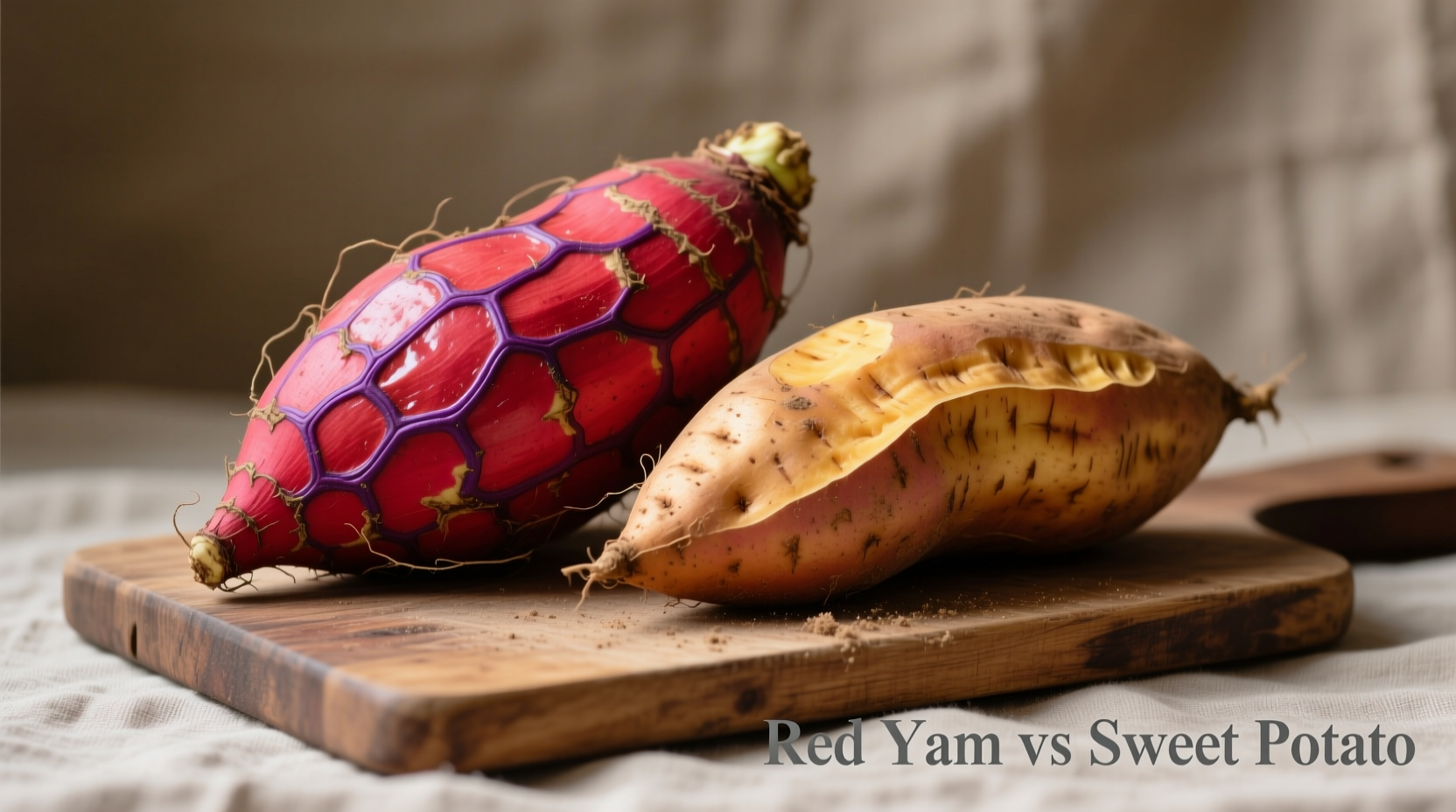Why You've Been Misled About Yams and Sweet Potatoes
If you've ever bought "yams" at a U.S. grocery store, you've actually purchased sweet potatoes. This widespread confusion dates to the early 20th century when Southern growers introduced orange-fleshed sweet potatoes to distinguish them from traditional white-fleshed varieties. To avoid consumer deception, the USDA now requires labels with "yam" to also include "sweet potato"—but the misnomer persists. Understanding this distinction matters for your cooking, nutrition, and cultural appreciation of these globally significant tubers.

Unpacking the True Red Yam
True red yams (Dioscorea rotundata) originate from West Africa and remain dietary staples across tropical regions. Unlike their mislabeled counterparts:
- Skin texture: Thick, rough, bark-like exterior requiring heavy knives to peel
- Flesh color: Typically white or yellow (rarely reddish), not orange
- Flavor profile: Starchy and neutral, similar to regular potatoes
- Culinary role: Primarily a carbohydrate source in African and Caribbean stews
According to UN Food and Agriculture Organization research, over 95% of global yam production occurs in West Africa, where they're deeply embedded in cultural traditions like Nigeria's New Yam Festival.
Sweet Potatoes: America's Misnamed Superfood
What U.S. consumers call "yams" are actually sweet potatoes (Ipomoea batatas), native to Central and South America. Key characteristics:
- Varieties: Orange-fleshed (most common), purple ( Stokes County ), and white-fleshed types
- Nutrition advantage: Orange varieties provide 400%+ of daily vitamin A needs per serving
- Texture: Moist and tender when cooked (vs. yams' drier consistency)
- Historical note: Traced to 5,000-year-old Peruvian artifacts per USDA Agricultural Research
| Feature | True Red Yam | Sweet Potato ("Yam") |
|---|---|---|
| Botanical Family | Dioscoreaceae | Convolvulaceae |
| Native Region | West Africa/Asia | Central/South America |
| Skin Texture | Rough, bark-like | Smooth, thin |
| Raw Flesh Color | White/yellow | Orange/purple/white |
| Vitamin A (per cup) | Minimal | 1,403 mcg (156% DV) |
| Common U.S. Labeling | Extremely rare | "Yams" (incorrectly) |
Practical Guidance for Shoppers and Cooks
Identifying authentic products: Look for "true yam" or scientific name Dioscorea in specialty markets. Most U.S. grocery "yams" are orange sweet potatoes. Caribbean markets sometimes carry actual yams labeled "nyami" or "igname".
Storage differences: Sweet potatoes last 3-5 weeks in cool, dark places. True yams require warmer storage (55-60°F) to prevent chilling injury. Never refrigerate either raw tuber.
Cooking applications:
- Red yams: Best boiled or fried in stews (like Ghanaian fufu) due to neutral flavor
- Sweet potatoes: Excel roasted (enhances natural sugars), mashed, or in pies. Purple varieties retain color best when steamed
When substituting in recipes, remember: yams absorb flavors better while sweet potatoes contribute sweetness. For authentic Caribbean dishes, seek true yams at African markets—most U.S. recipes actually work better with sweet potatoes.
Debunking Common Myths
Myth: "Red yams are just a darker variety of sweet potato"
Fact: They're botanically unrelated—like comparing apples to oranges. Genetic analysis confirms Dioscorea and Ipomoea diverged over 100 million years ago.
Myth: "Yams have more carbs than sweet potatoes"
Fact: Per USDA FoodData Central, 100g of yam contains 28g carbs versus 20g in sweet potato. Sweet potatoes' higher sugar content creates perceived sweetness despite lower total carbs.
Your Action Plan for Confident Selection
Next time you're shopping:
- Check labels for "sweet potato"—this is what you're actually getting
- For true yams, visit African or Caribbean specialty markets
- Choose firm tubers without soft spots regardless of type
- Use orange sweet potatoes for baking, white varieties for savory dishes
Understanding this distinction transforms your cooking accuracy and honors the cultural heritage of both crops. Whether you're making Nigerian asaro or Southern candied "yams," using the right ingredient creates authentic results.











 浙公网安备
33010002000092号
浙公网安备
33010002000092号 浙B2-20120091-4
浙B2-20120091-4